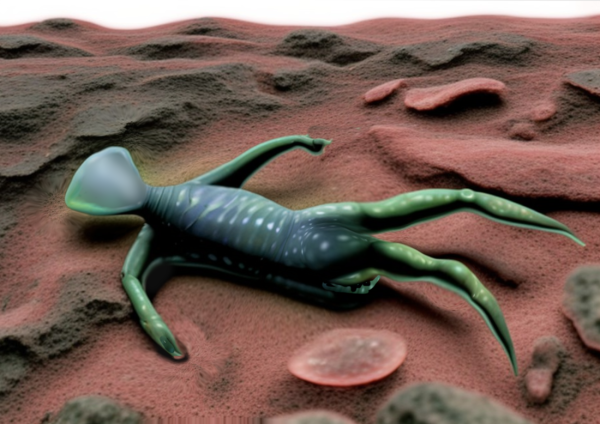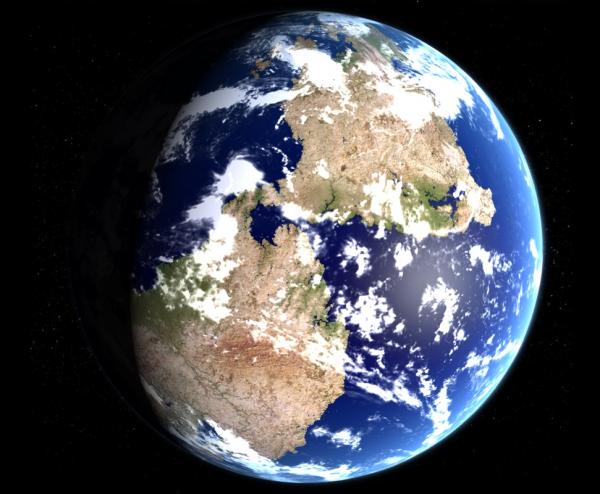BY LETTER
Hyraians
Image from Steve Bowers |
Several species of sentient aliens are known to exist in the Milky Way galaxy and beyond, and many more species have become extinct; but none resemble humanity very closely. This is a little surprising, as the humanoid bodyplan is relatively useful for an intelligent creature. However the erect biped bodyplan is quite rare, and the evolution of intelligence does not require this form to evolve before sentience emerges. It is possible, perhaps even likely, that some humanoid species exist in our galaxy or in others nearby, or have done so in the past. But no evidence of such species has yet been found. The extinct Hyraian race was initially thought to be the first such race discovered.
In AT 9225 xenoarchaeologists discovered evidence for a vanished alien culture on the thalassic Gaian world Hyrai in the Carina Rush volume.
The most significant discovery were numerous wall paintings which appeared to depict terragen-like humanoids. Since Hyrai had an atmosphere breathable by baseline humans, this suggested that the xenosophonts who painted them may have been very similar in morphology to humans.
Progenitists all across the Terragen Sphere offered this as proof humans were themselves provolved from a more ancient race. Many archaeologists believed it to be a hoax, but for the next dozen or so years, progenitist theories gained more widespread acceptance than ever before.
The Paintings
The paintings depicted beings with two arms, two legs, and a heavily rounded triangular head with three circles, two small ones on top and a larger one on the bottom, in a pattern reminiscent of a human face. Rather than being attached to a single stick, the limbs seemed to radiate from a point just beneath the head. The 'legs' were longer than the arms, and pointed at a more downward angle.The Bubble Bursts
In 9238 AT, a preserved Hyraian exoskeleton was found in an especially arid cave, having been preserved by the salt deposits. Since there were paintings on the side of the cave, and no evidence of animal domestication thus far, there was no doubt that these were the remains of a Hyraian. It was decidedly not humanoid. Rather the creature was a land-adapted jellyfish-like creature, similar to an Earth cnidarian. The so-called 'legs' in the pictures were actually sharpened tendrils, used presumably to lance the other in the mating process. The 'arms' were unsharpened, and much shorter, and were eventually found to be reproductive organs. The 'head' proved to be a fin-like stalk, growing out of the central body containing the reproductive clusters and digestive organs. Image from Steve Bowers and Artbreeder AI (minimal input) | |
| A reconstruction of a Hyraian from fossil remains. Beneath the forward-facing tentacles is an open maw. The colour of this organism is largely a matter of conjecture. | |
The circles' patterns on the mating flaps remain a mystery; the leading theory is that they were the first semblance of a written language.
 Image from LordOther | |
| Hyrai, a Garden World once home to the extinct Hyraian xenosophonts | |
Appears in Topics
Development Notes
Text by Tsochar, with some additions by Steve Bowers
Initially published on 31 October 2007.
Initially published on 31 October 2007.






